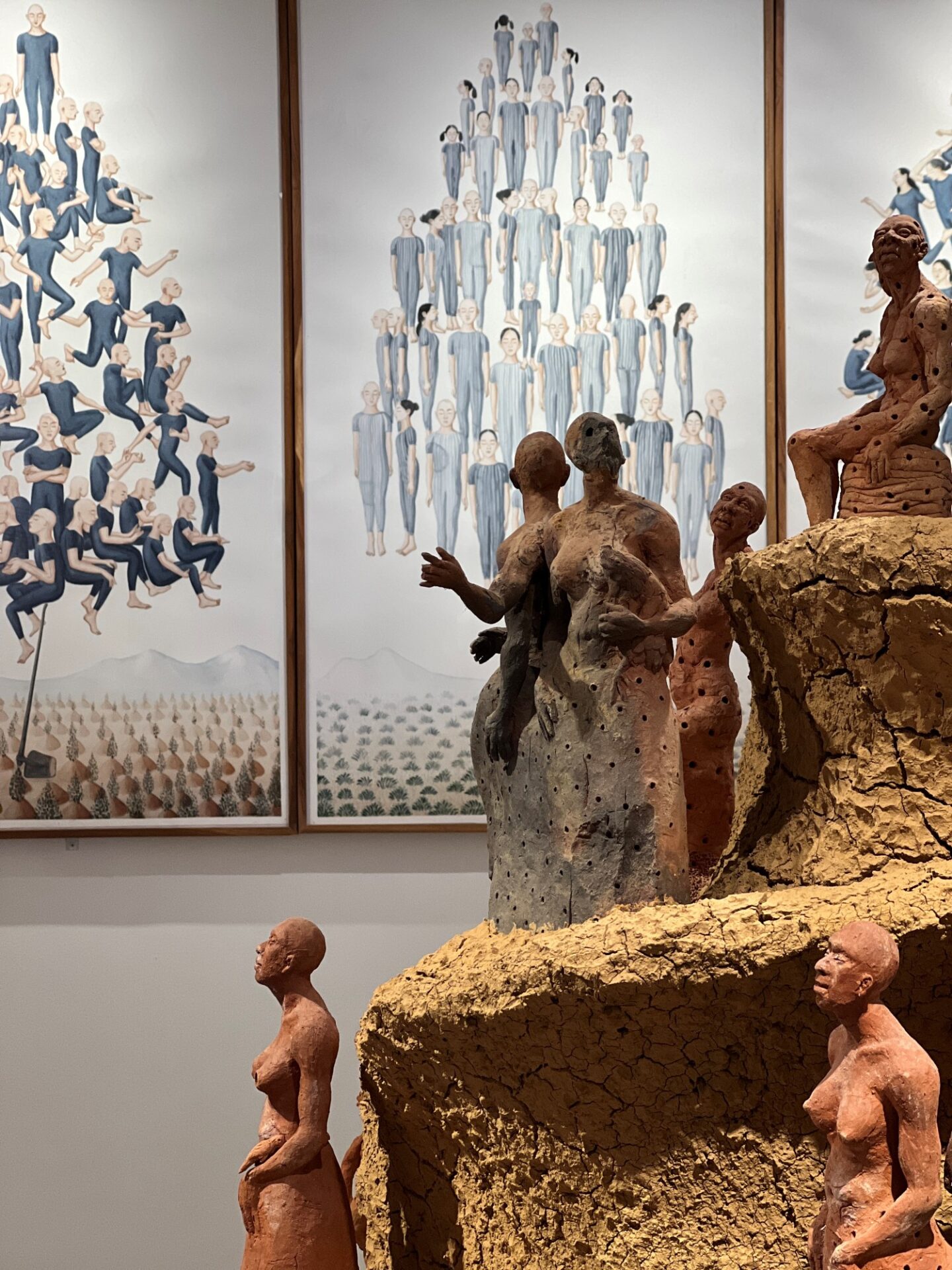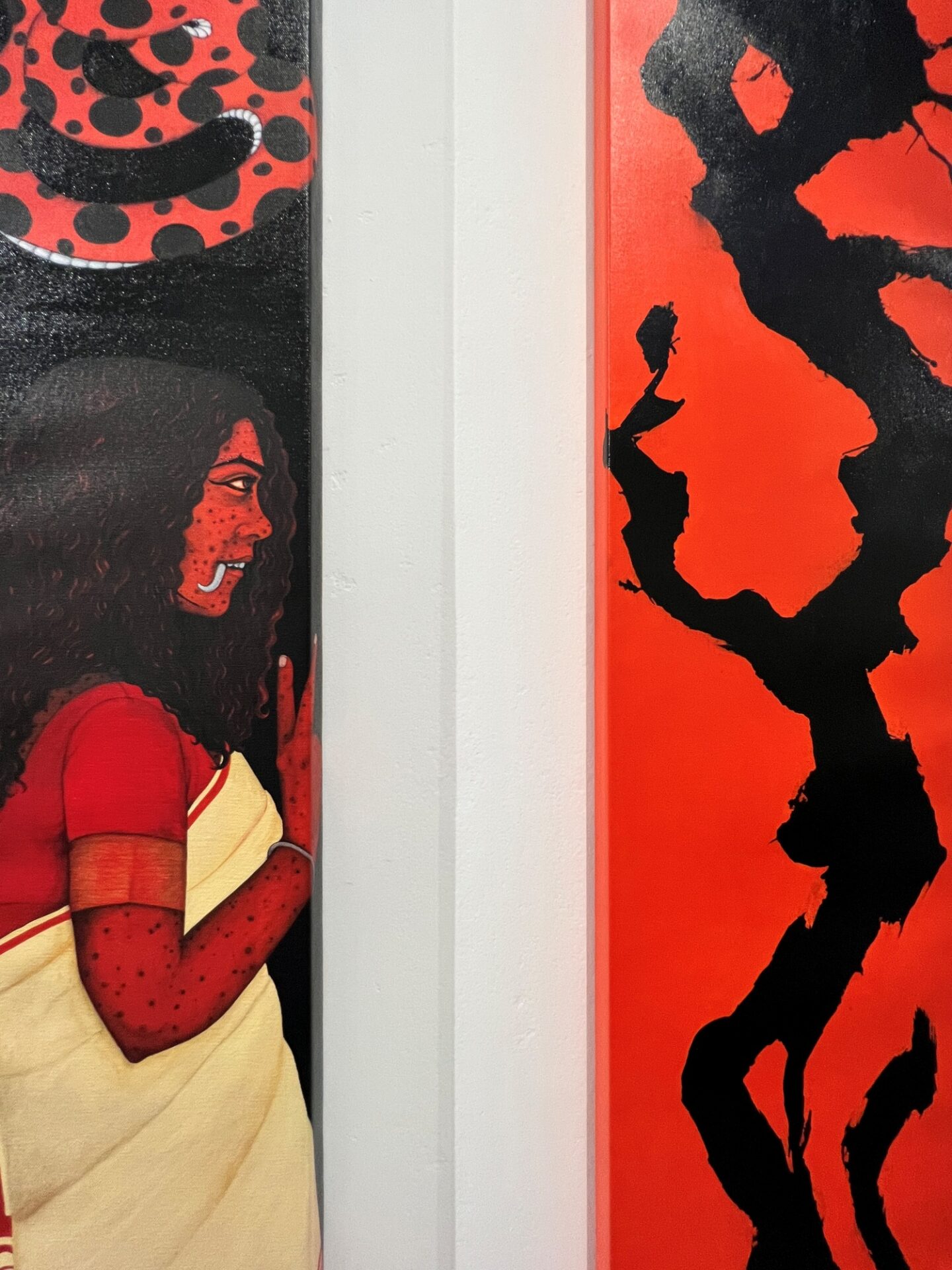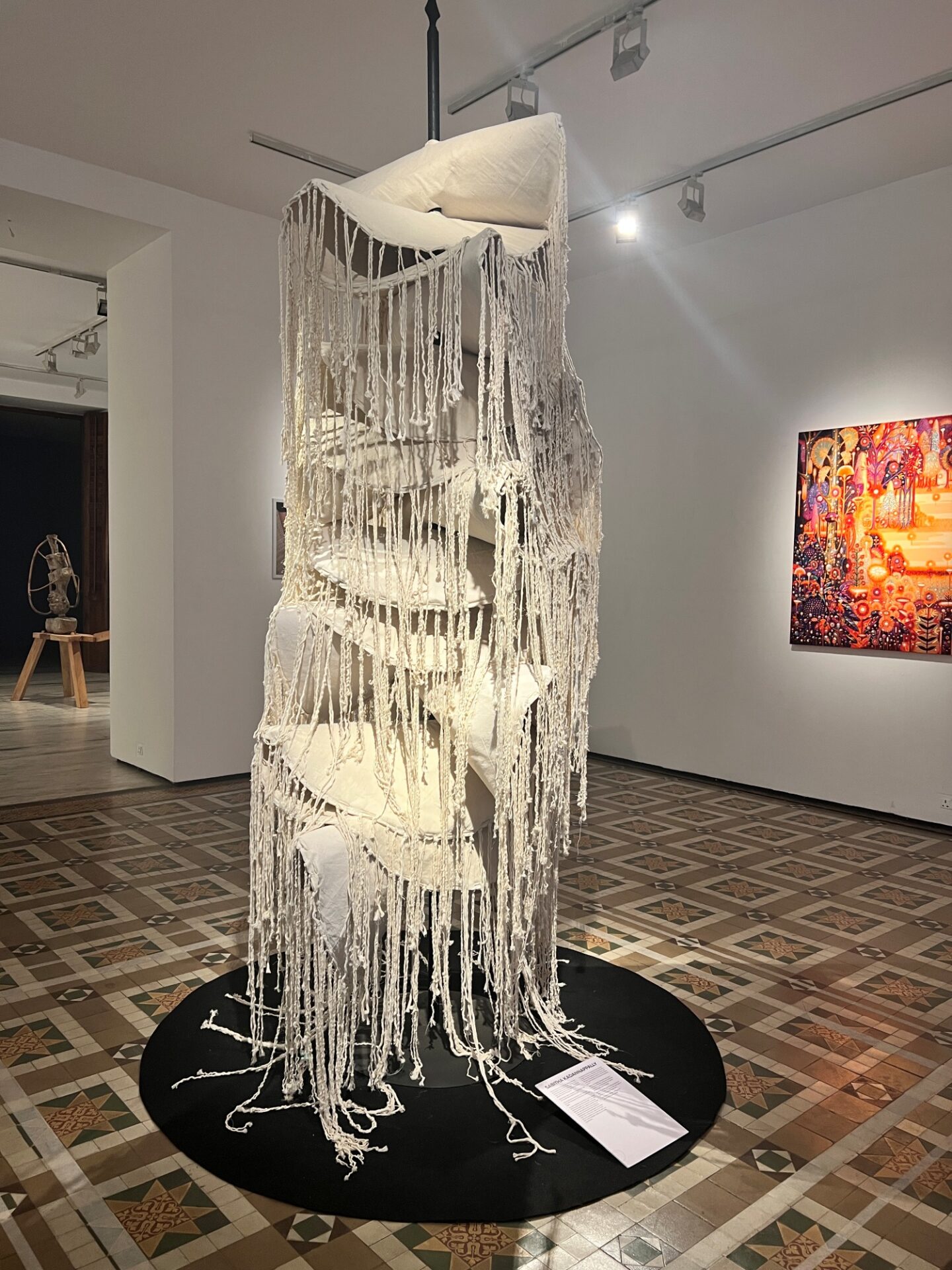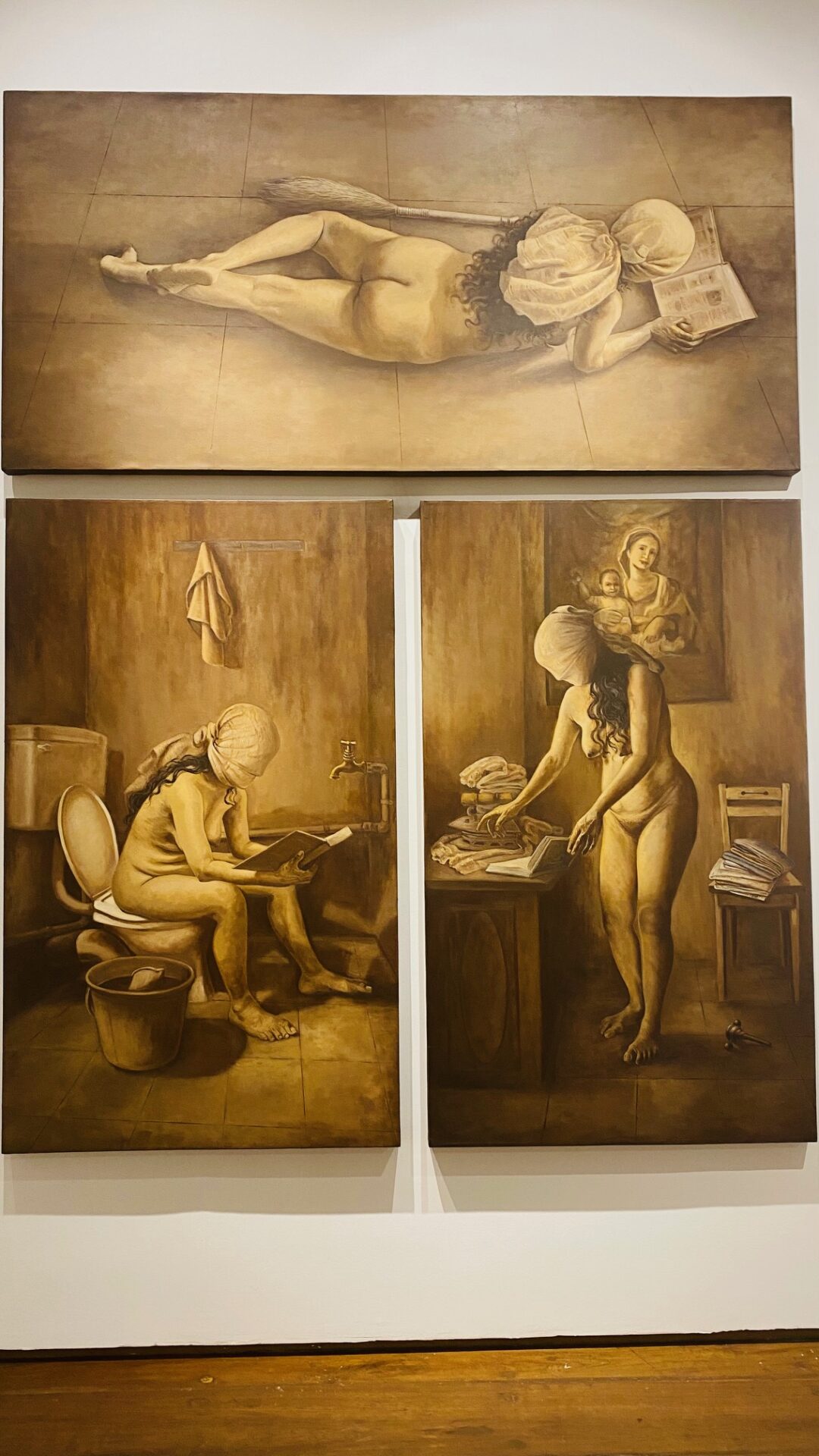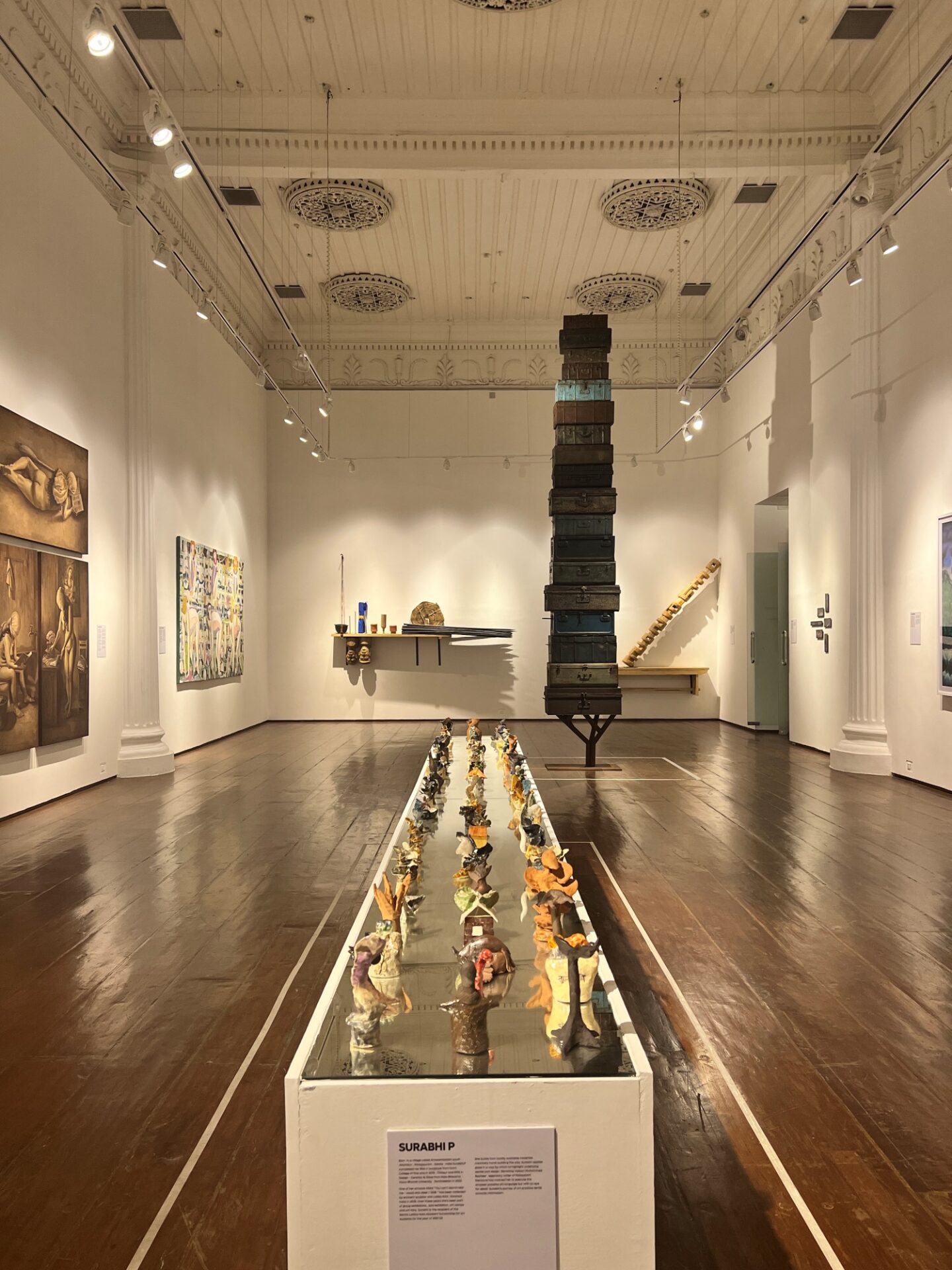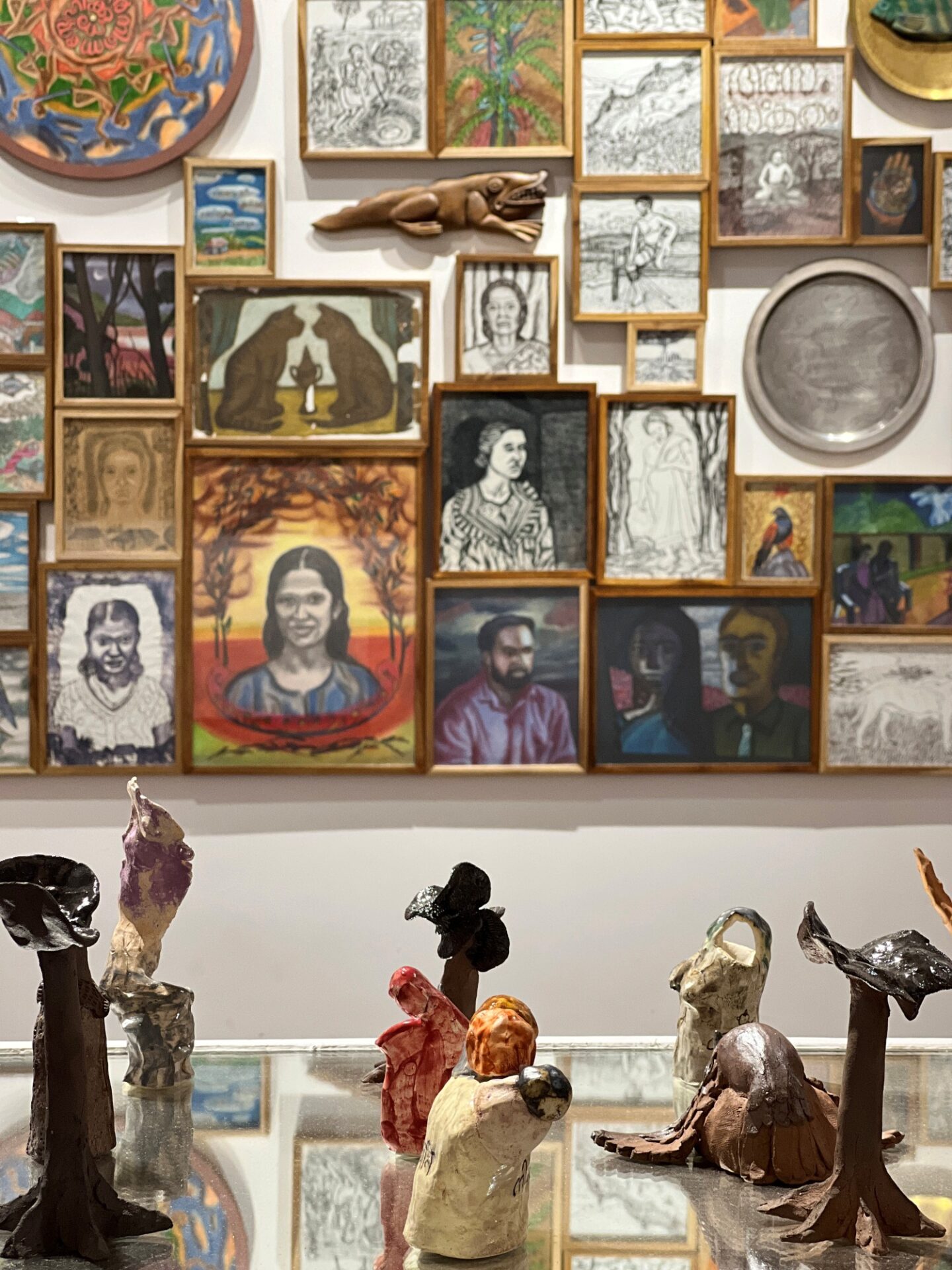IDAM: Where Being Sprouts into Language
Three curators, 34 artists and IDAM sprung into being. Gigi Scaria, Radha Gomaty, and Jalaja P S who are also practicing artists have chosen some of the diverse voices from the resident artists of Kerala offering a range of artistic talent and stunning chronicles. These works of art are exhibited at Durban Hall, one of the 17 venues of the Kochi Muzris Biennale. By Deepa Gopal
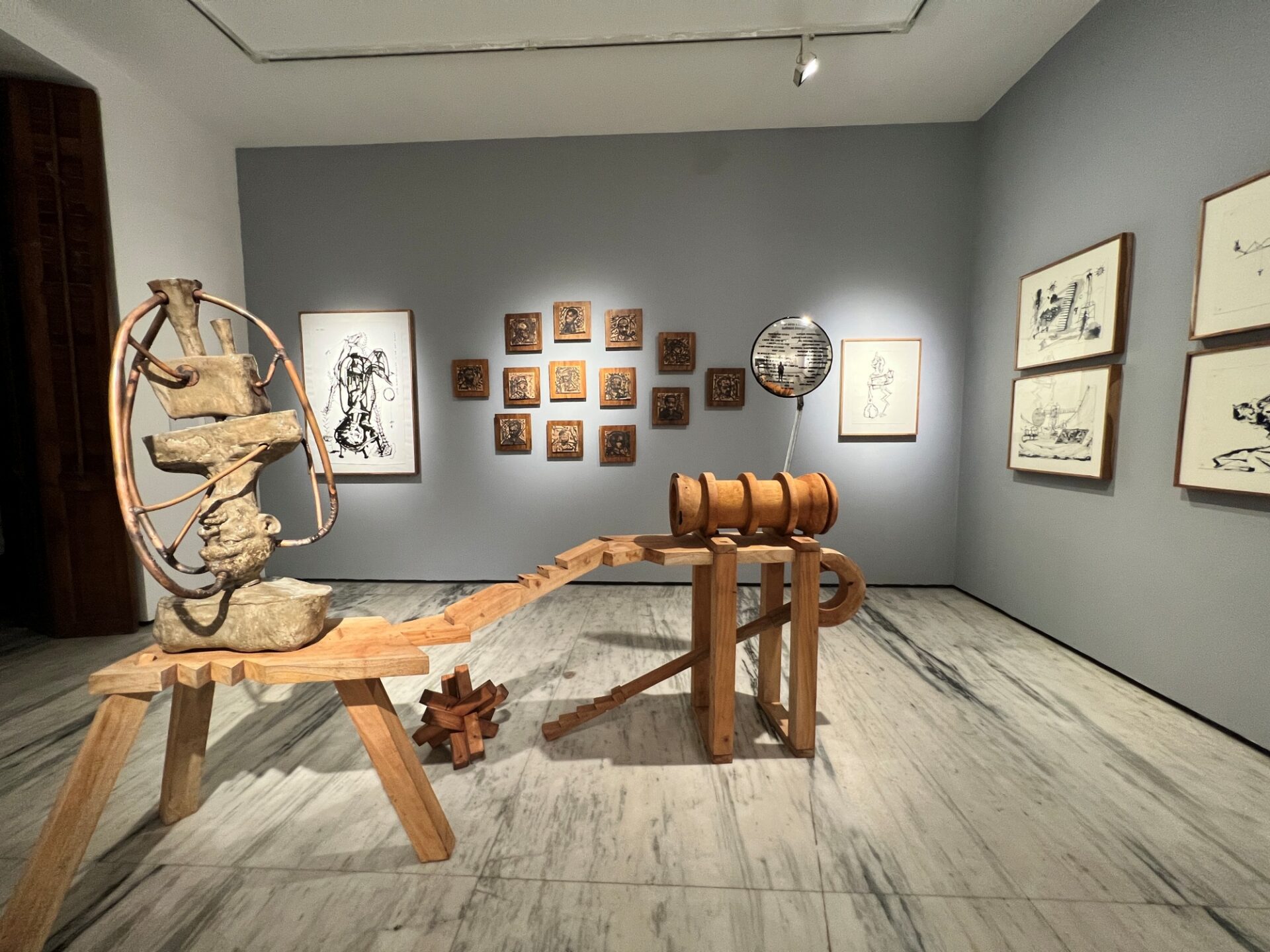 From found objects to figurines, from sculptures to totem-like versions, from threads to animation – the length and breadth of this show incite curiosity. It is a treat to the senses and instigates imagination offered by a cross-section of artists from an authentic and enormous profusion of an ocean. The exhibition materialised in collaboration with the Kerala Lalithakala Akademi.
From found objects to figurines, from sculptures to totem-like versions, from threads to animation – the length and breadth of this show incite curiosity. It is a treat to the senses and instigates imagination offered by a cross-section of artists from an authentic and enormous profusion of an ocean. The exhibition materialised in collaboration with the Kerala Lalithakala Akademi.
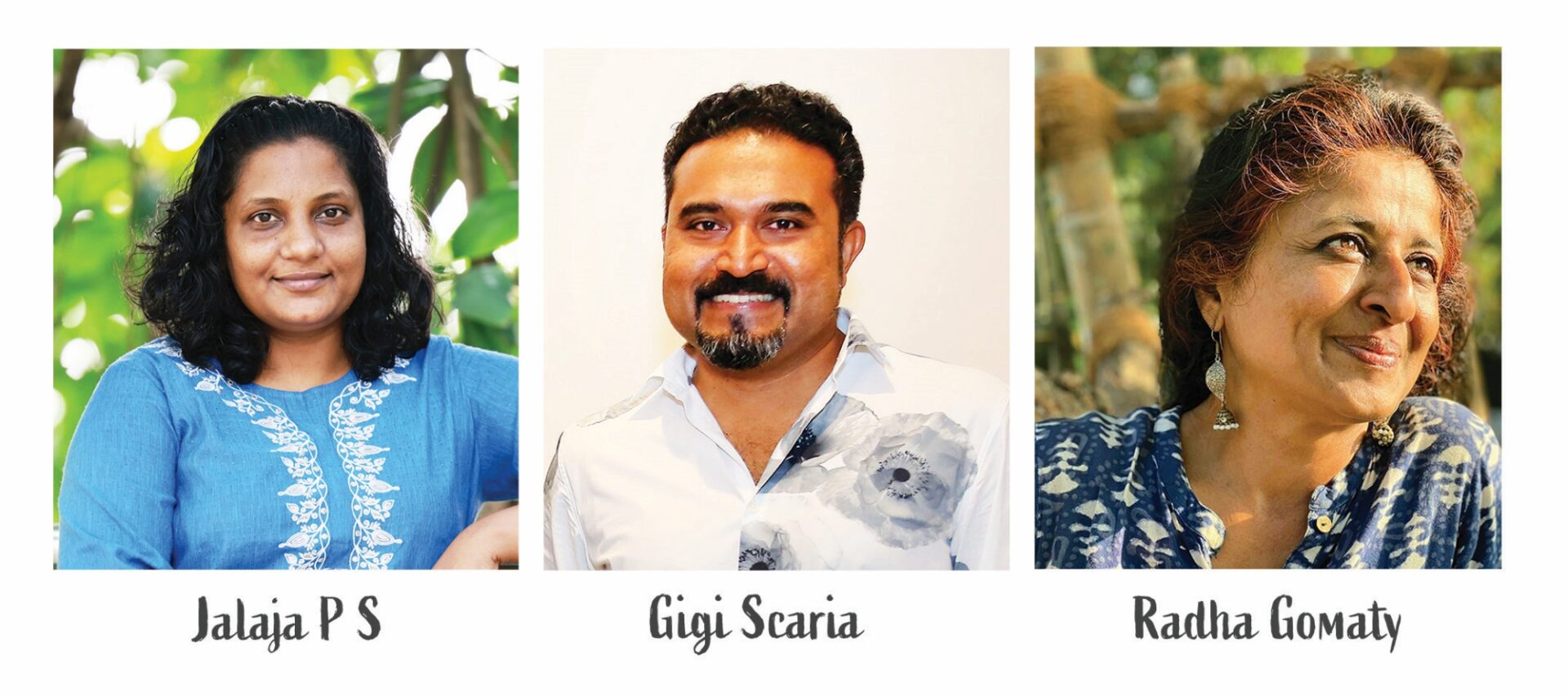 The curators adorned the garb of spirited seekers visiting artist studios and pooling them in. While Jalaja worked on ‘struggle’ as her premise, Scaria looked for young, dynamic, and diverse practitioners connected to the contemporary, and Radha relied on her spirited and absolute instinct. The result is a vibrant exhibition that provides a sense of cohesion and harmonious progression despite manifold voices. It bears witness to the camaraderie between the three curators and projects that balance.
The curators adorned the garb of spirited seekers visiting artist studios and pooling them in. While Jalaja worked on ‘struggle’ as her premise, Scaria looked for young, dynamic, and diverse practitioners connected to the contemporary, and Radha relied on her spirited and absolute instinct. The result is a vibrant exhibition that provides a sense of cohesion and harmonious progression despite manifold voices. It bears witness to the camaraderie between the three curators and projects that balance.
Jalaja P S extended a set of questions to each of her artists to gather information regarding their struggles in life, art, personal space, and society. The responses informed the language and their expression. Their understanding of the socio-political structure, the financial drain, and the emotional imbalance amid these fluctuating times have all accorded to the development and understanding of their semantics. From these dire needs the works arose, their language birthed and their commitments set. Every struggle that an artist faces is numerous and that doubles up as a woman art practitioner. The women here vouch for that. While Anto George’s work tried to break and evolve from his conventional upbringing, Vinu V V’s razor-sharp query on the socio-political hierarchy rebukes the order. It is these struggles that Jalaja has attempted to sieve in and center around. That account has a solid foothold since it has a history to speak about.
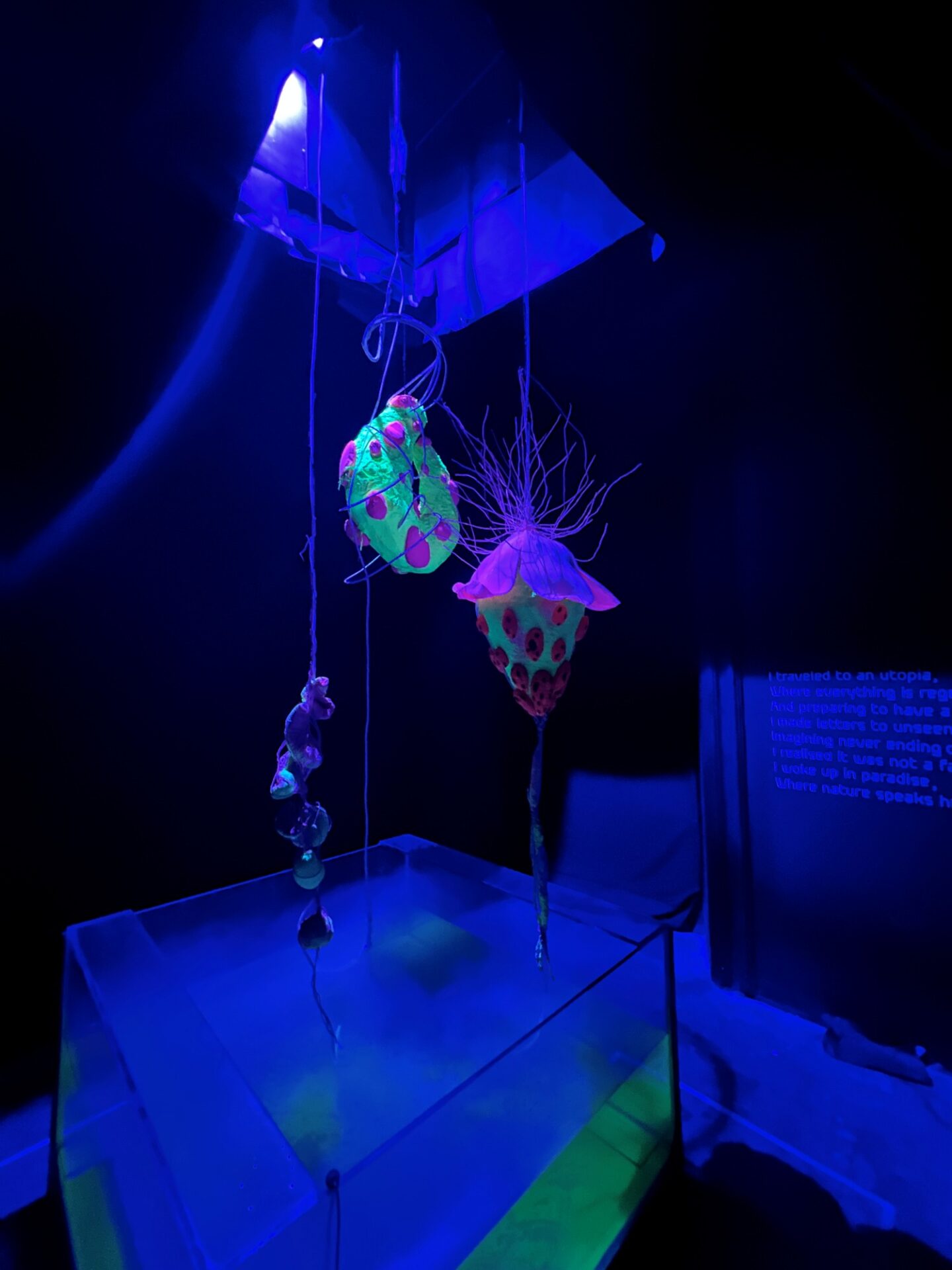
Aneeta Rose Abraham’s “Rserved Space” a spatial idea where all natural species get enriched and grow without human intervention.
Gigi Scaria wanted a break from the usual representations and project an alternate perspective while garnering his team. Working with a local sense while having a global vision and aesthetics certainly touch the larger audience. With this in mind, Scaria could connect the traditional narrative, experimental art, and everything in between. The transition phase is a ubiquitous one in that the language is continuously transforming.
The contemporariness in the language of the works panned out in the larger context. From the narrative in Jyothiraj Mayampilly’s works to the out-of-the-box language of Aneeta Rose Abraham, everything fit in perfectly like a jigsaw puzzle. Environmental issues and organic living are part of the creative conversation as in Lakshmi Vilas Collective where art and life become inseparable. Aneeta Rose Abraham and M R Vishnuprasad are not conventional art practitioners, he mentions. Scaria’s focus was also on contemporary practice with science, design, technology, and performance in certain cases. What generates interest and what moves one in that particular situation is vital when selecting an artist, Scaria points out.
Radha Gomaty recalls the beginning with three styles of curation, three approaches, 34 artists and many mediums, one hectic coordination, alongside shoestring budget and time, and the excitement it brought to work with some of her close associates and artists. Studio visits were the best part when Radha’s intuition peaked and she recalls stories in connection with all the artists and their works. Avasavyuham with its mythological connotations with the sense of nature was the trigger idea, the seed, and the spirit from which IDAM germinated Radha mentions. Arguing and criticising where necessary with high energy at work was grueling and vulnerable.
They split the tasks among themselves and that worked wonderfully well, she added. Radha undertook all the written work, language being her strong suit. She relied on her “water diviner’s instinct” in choosing her artists. Rejani S R’s weeping god, Hima Hariharan’s miniature works, Asha Nandan’s bright, multi-coloured palette, Sara Hussain’s sepia tones, Sunil Vallarpadam and K S Prakasan’s estuarine works, Sunil A P’s highlighted alphabets and spectacles in The Absurd – Hollow Land, Rathidevi Panicker’s newfound language were all wrap-around experiences.
As the rooms were set, one effortlessly choreographed one’s way to the other. Chithra E G’s clay sculpture Thuruthu to Sabitha Kadannappally’s fabric and metal sculptures Freedom – Pinned and Separated, K S Prakasan’s installation to Lakshmi Nivas Collective’s existential approach in Scream, Mibin and Aami Atmaja’s collocation with Mona Isa’s embroidered display of Kame Gowda that suggested a profound reversal of thought. Surabhi P’s psychedelic-ceramic-figurines that mirrored and multiplied with Anto George’s works beside them.
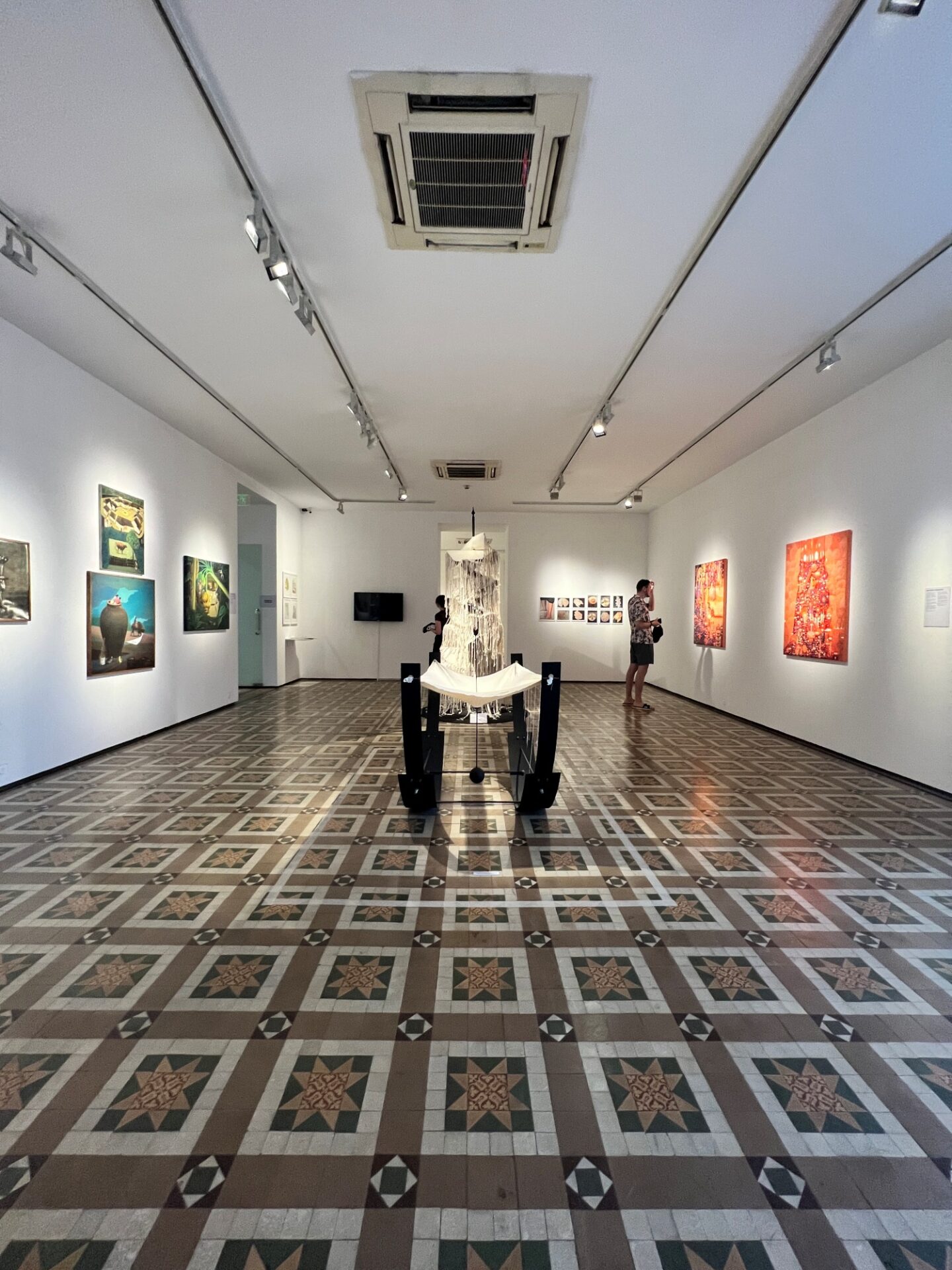 Their whispers and echoes augmented Abdulla P A’s ‘found objects’ and family tree that stood bizarrely in the middle of the room, connected to the earthy tones in the group. Sijo P G’s subtle water colours, Suhaima C K’s installation pacify this and place Anjum Rizvi’s skillfully crafted beadwork in perspective. Vishnuprasad’s poetry performance and Aswathi Prakash’s self-absorbed drawing of hair, Hariprasad R and Madhu Venugopalan’s animation along with his series, An Antique Piece of Love, and Hariharan Subramanian’s visuals of boat-jetty that overlays horror in broad daylight in The Discovery of Alappuzha, it is a visual treat! IDAM becomes a space of myriad renditions where creativity has taken an elevated stance, a place where hues and shades, textures and mediums, tangible and intangible meet and merge.
Their whispers and echoes augmented Abdulla P A’s ‘found objects’ and family tree that stood bizarrely in the middle of the room, connected to the earthy tones in the group. Sijo P G’s subtle water colours, Suhaima C K’s installation pacify this and place Anjum Rizvi’s skillfully crafted beadwork in perspective. Vishnuprasad’s poetry performance and Aswathi Prakash’s self-absorbed drawing of hair, Hariprasad R and Madhu Venugopalan’s animation along with his series, An Antique Piece of Love, and Hariharan Subramanian’s visuals of boat-jetty that overlays horror in broad daylight in The Discovery of Alappuzha, it is a visual treat! IDAM becomes a space of myriad renditions where creativity has taken an elevated stance, a place where hues and shades, textures and mediums, tangible and intangible meet and merge.


